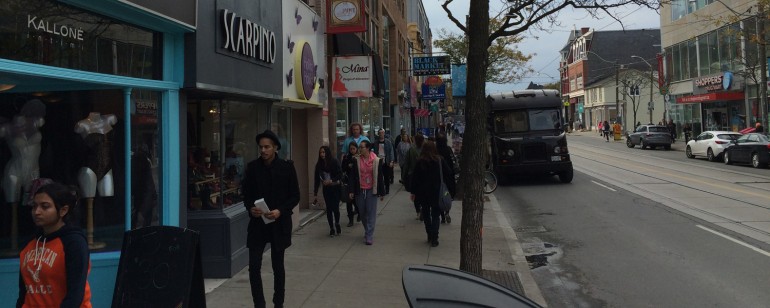The sign brings customers
Jean de La Fontaine (French Poet)
For retail, signage is not the only thing that brings customers, but it is one of the most important elements in a complex equation. Regardless of whether a retail business is selling a service or product, signage, particularly storefront signage, is an essential identifier of both the brand and the offering. For maximum effect, signage needs to be highly visible to approaching shoppers. However, all too often, retailers in urban settings rely on signage that is affixed across their storefront façade rather than blade signs which hang perpendicular to the storefront and within the natural sight line of pedestrians strolling along the sidewalk (assuming that they aren’t too distracted by their smart phones) – Or they simply underestimate the value of blade signs in capturing attention or setting a tone for their retail brand.
The evolution of the blade sign
Because of their sheer effectiveness, blade signs have a long and rich history, evolving over time from purely utilitarian to highly artful. Although the earliest known retail signage dates back to Egyptian and Roman times, it was during the Middle Ages when commerce was beginning to flourish, that the signboard or blade sign as we now refer to it, came to life. In the late 1300’s, King Richard III of England passed a law requiring establishments selling ale to place a sign in front of their building, primarily for identification purposes for official ale inspectors. Initially, these blade signs were purely utilitarian. With wide-spread illiteracy, they relied exclusively on simple iconography and imagery to communicate.
Gradually over time and with increasing commercial competition, the practice of using blade signs caught on among all shopkeepers, trades and places of business. And so the art of the blade sign developed. Not only were typography and logos added, but imagery and artwork evolved to be more ornate while execution grew more elaborate with heavy carving, delicate painting and applied gold leaf. (Think of the typical British pub signs that still remain on the narrow streets of London). By the 16th and 17th century blade signs reached their peak, as businesses tried to outdo each other for attention, with larger and more elaborate signs. So much so, that major cities such as London and Paris passed laws restricting size and placement of signs and even requiring businesses to remove signs altogether or affix them directly to their storefronts.
Blade signs today
Sometimes, it seems that the art of the blade sign has disappeared. Not only are they not fully employed (sometimes, understandably due to bylaw restrictions) but they are also under-utilized. When well-designed and well-positioned within the natural sight line of pedestrians, blade signs are highly effective particularly in urban shopping areas and shopping centres. Few shoppers look at a store straight–on, so it makes sense to maximize blade signs! It’s a chance to get attention and make your brand and product offering utterly clear.
A quick audit of blade signs along Queen St. in Toronto – from the ordinary and ubiquitous to the extraordinary and unique – reveals that some retailers are more successful than others. For some, the art of the blade sign lives on, for others it is nothing more than a utilitarian sign.






















